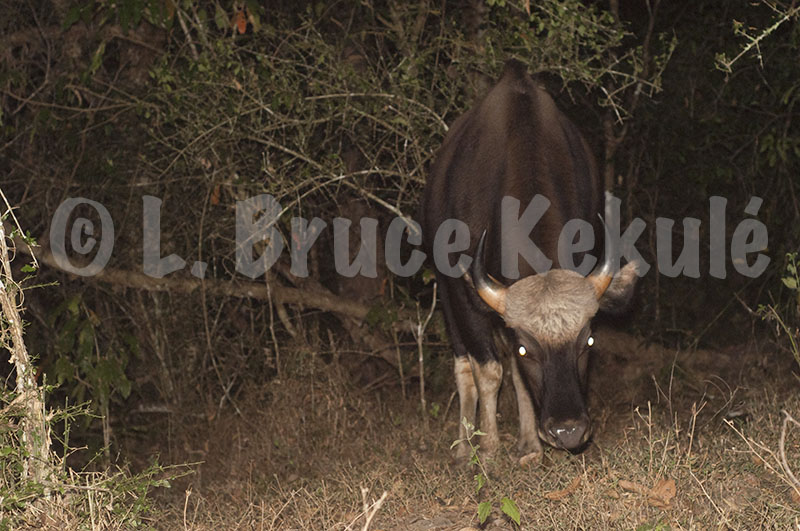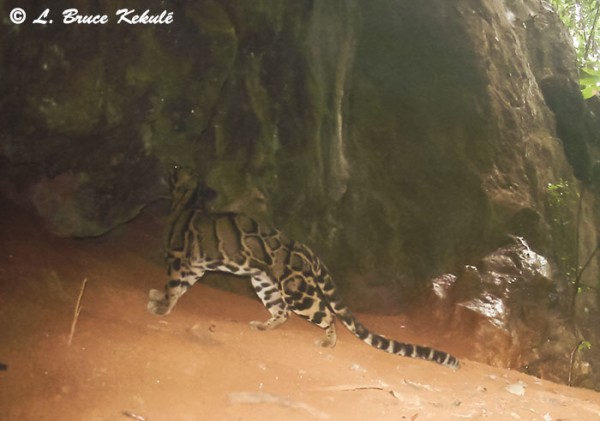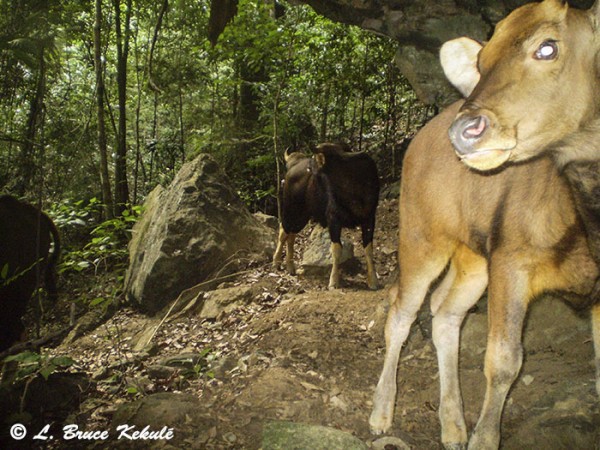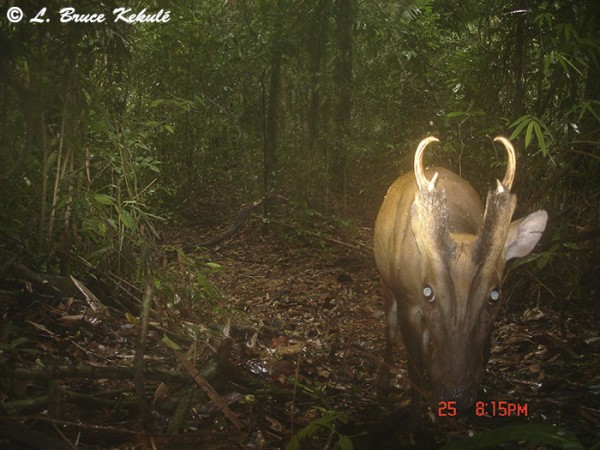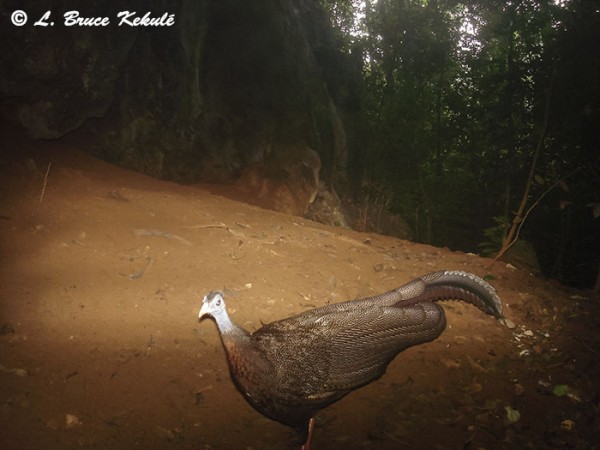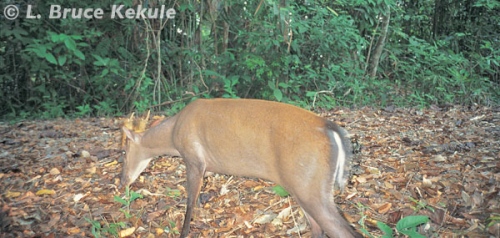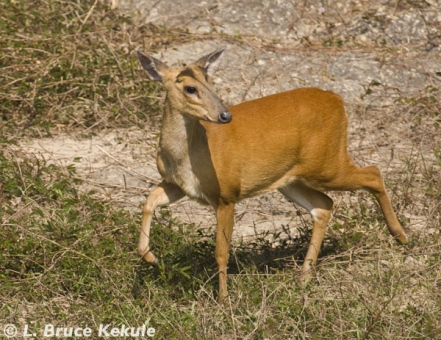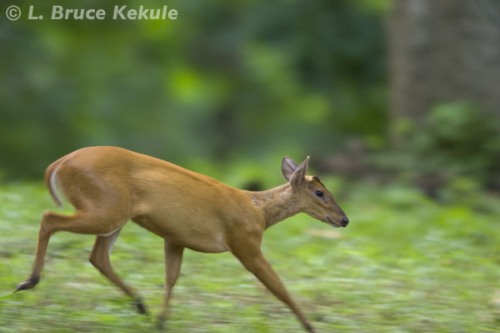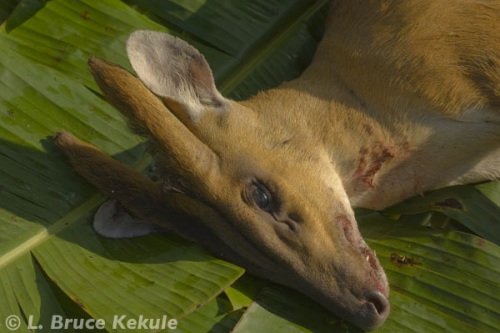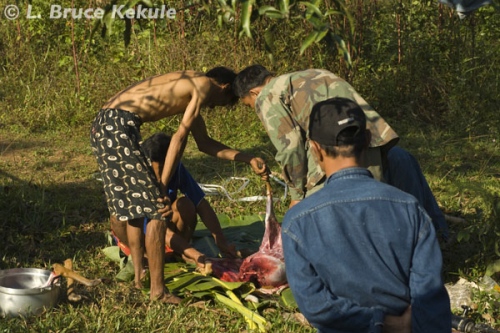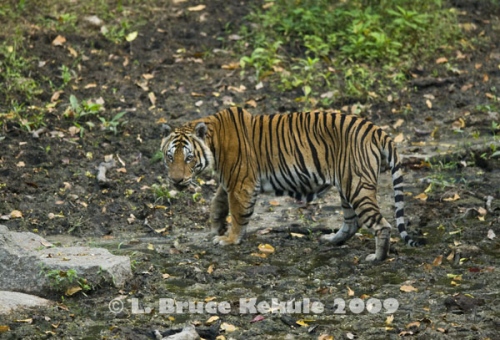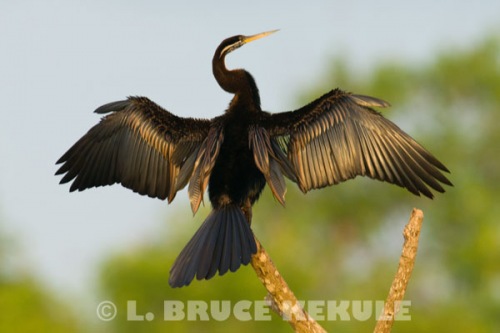
Sign Up or Log In
Gallery
Recent posts
- THAILAND’S NATURAL HERITAGE: A look at some of the rarest animals in the Kingdom – Part One
- WILDLIFE in THAILAND: A Photographic Portfolio of Thailand’s Natural Heritage – Part Three
- WILDLIFE in THAILAND: A Photographic Portfolio of Thailand’s Natural Heritage – Part Two
- WILDLIFE in THAILAND: A Photographic Portfolio of Thailand’s Natural Heritage – Part One
Archives
- May 2020
- April 2020
- November 2019
- April 2018
- March 2018
- February 2018
- August 2017
- July 2017
- May 2017
- April 2017
- March 2017
- January 2017
- November 2016
- August 2016
- June 2016
- May 2016
- April 2016
- March 2016
- February 2016
- January 2016
- December 2015
- November 2015
- October 2015
- September 2015
- July 2015
- June 2015
- May 2015
- April 2015
- March 2015
- February 2015
- January 2015
- December 2014
- October 2014
- September 2014
- August 2014
- July 2014
- June 2014
- May 2014
- April 2014
- March 2014
- February 2014
- January 2014
- December 2013
- November 2013
- October 2013
- September 2013
- August 2013
- July 2013
- June 2013
- May 2013
- April 2013
- March 2013
- February 2013
- January 2013
- December 2012
- November 2012
- October 2012
- September 2012
- August 2012
- June 2012
- May 2012
- April 2012
- March 2012
- February 2012
- January 2012
- November 2011
- October 2011
- September 2011
- August 2011
- July 2011
- June 2011
- May 2011
- March 2011
- February 2011
- December 2010
- November 2010
- October 2010
- September 2010
- August 2010
- July 2010
- June 2010
- May 2010
- April 2010
- March 2010
- February 2010
- January 2010
- December 2009
- November 2009
- October 2009
- September 2009
- July 2009
Links
Wildlife Links
Posts Tagged ‘barking deer’
First time DSLR Camera Trap Location
‘Tiger, leopard, tapir, gaur, elephant, sambar and barking deer visit a Nikon D90 camera trap…!
A female Indochinese tiger camera trapped near a ‘hot spring’ in the ‘Western Forest Complex’ of Thailand…(image cropped)…!
For some twenty years, I have been visiting a natural seep in the Western Forest Complex of Thailand to photograph wildlife that come for important minerals flowing from a rocky formation. It has been extremely rewarding over the years, and I finally decided to set a DSLR camera trap just above the natural hot springs.
In one frame, this female stepped forward and turned its head because of the flash…!
I knew that tiger and leopard visited this place hunting prey species like muntjac (barking deer), sambar, wild pig and tapir plus other animals such as gaur, banteng and elephant. I chose a trail that is about 4 meters away from the hot spring. I left the cam for almost two months and it was still working when I returned, but flash power had long drained away.
Same female tiger back again 2-weeks later at night…!
A female tiger visited first at night on Feb. 14, 2017. She then came back past the cam three times on Feb. 21, again at night passing the camera several times. Then a leopard came by during the daytime on Feb 26th. Other creatures like sambar, muntjac, tapir, gaur and elephant tripped the camera many times during the two-month soak.
The female once again that night…need to move the cam for future head-on shots…!
And again making for a very good record of her visit to this cam…!
However, most shots are all butt shots. It looks like they have come to the spring and then walked past my camera going up-hill hence mostly rear-end shots.
A male leopard walking past in the morning. Daytime shots of carnivores are rare here…!
I hope to go back here in a week or so where I will be moving the camera with a wide-angle lens for more on-coming shots.
A female tapir in mid-afternoon passing the cam.
Tapir pair with the male on the left…
I’m also after a black leopard that I have seen here almost twenty years ago and then again recently about two years ago.
A young female gaur on the way down to the hot-spring…!
Elephant trunk, tail and legs…! These giants always test my ‘elephant proof’ cameras…!
A scruffy sambar yearling at night…!
I was delighted to get this amount of wildlife traffic and look forward to future set-ups’ here…!
Tiger Hunter testing his Nikon D90 DSLR camera trap…!
PLEASE NOTE: Recently, an American so-called ‘Wildlife NGO’ stole one of my tiger images, cut my name and copyright off the image and published it on their website without any permission to use said image and credit to me. At this time, I’m not sure what course of action I should take. However because of this, I will now be ‘water marking’ through the subject on all of my images for the future with my name as follows: © L. Bruce Kekulé
I thought that an American NGO would be honest and sincere about © copyright…but that is not the case as proof of theft has been recorded and action is being taken against this NGO and its CEO.
A goral and a muntjac on the D3000 in India
Two even-toed ungulates caught by my DSLR travel cam…!
Another two species captured on my Nikon D3000 travel cam was a goral (goat-antelope) and a muntjac male (barking deer). Even though these two even-toed ungulates are not as glamorous as the tiger, they are still an indication of the prey base found in Vanghat Wildlife Reserve (private land) in the Corbett Landscape. Hopefully sometime next year, I will be able to return to this place but earlier (about Feb.when it’s cooler). It was boiling hot this year and a bit of a fire hazard (many areas are now being razed by fire) and certainly if I had waited any longer, my camera may have been burnt to crisp)…!
Goral (goat-antelopes) are found in Northern India in the foothills of the Himalayan Mountains…!
A muntjac male (barking deer) are found all over India and a main food source for the big cats…!
Land of the Argus Pheasant
Colossal limestone massifs in Khlong Saeng Wildlife Sanctuary, Surat Thani province, southern Thailand.
Down in southern Thailand, the Khlong Saeng River flows from the Phuket Mountain Range into the Gulf of Thailand at Surat Thani province on the eastern side of the peninsula. Up in the highlands, many tributary streams flow into the Rajaprabha Dam (formally know as the Cheiw Larn Dam) permanently flooding this forest in the upper reaches of this once magnificent biosphere. Some of that natural heritage still remains to this day.
Khlong Saeng is part of the Khlong Saeng-Khao Sok Forest Complex that has been a protected area since 1974 way before the destructive dam was constructed on the river in the 1980s. This large waterway flows east known as the Mae Nam Tapee flowing through the city of Surat Thani. The watershed is an immense wet tropical rainforest with many wild Sundaic and Himalayan species still thriving here.
Colossal limestone massifs some as tall as 900 meters rise up from the reservoir and dominate the landscape. These were laid down more than 200 million years ago during the mid to late Permian. Then they were thrust up when India crashed into the Asian plate that began 50 million years ago. The Indian plate had separated from the ancient continent of Gondwanaland and moved north on a tetonic plate resulting in the formation of the Himalayas and causing a north-south uplift across Southeast Asia in a ripple effect.
Unfortunately, the tiger and the leopard have already disappeared from the sanctuary but many other beautiful predators such as clouded leopard, golden cat and marbled cat still thrive here. This habitat unfortunately has been seriously degraded by the construction of the dam. However, some of this forest still harbor rare and unique Asian creatures like tapir, gaur, elephant and the magnificent Argus pheasant that continue to thrive in the thick vegetation made up primarily of moist evergreen forest.
There is a permanent reservoir 60 kilometers long and 20 kilometer at its widest point, and dammed near the Khlong Saeng Wildlife Sanctuary headquarters. Many people live on floating rafts and fishing is allowed. However, some fisherman in the past used devious methods like electricity or explosives plus trap-lines to catch fish and stocks plummeted. The Fisheries Department regularly release certain species to boost the local economy. Next door to Khlong Saeng is the world famous Khao Sok National Park. However, this has been very detrimental to the environment with extreme tourism that seems to be increasingly damaging to the biosphere.
There are many noisy boats and loads of tourists that visit Khao Sok National Park everyday next door. The Department of National Parks (DNP) manage the lake, and due to poor policies and low budgets, has had an enormous impact on the wildlife and ecosystems in the Khlong Saeng valley. The Electrical Generating Authority of Thailand (EGAT) who own the dam unfortunately gave responsibility to oversee the reservoir to Khao Sok. The national park’s mandate is to get as many people in as possible and make money for the park and its officials, and the local venders. Protection and enforcement is not part of their program. This of course has had a serious impact on the scheme of things.
In Early 2013, I became friends with Greg McCann with Habitat I.D. on Facebook. We decided to do a camera trap survey in the forests of Khlong Saeng as I knew it well having worked there photographing wildlife for two years in 2008-2009. It took us sometime to put a program together but we finally made the first foray into this forbidding and mysterious forest back in July of 2014. Habitat I.D. provided four Bushnell Trophy Cam (video/stills) camera traps plus some financial funding. I also threw in three Bushnell cams and a Nikon D90 DSLR cam.
In September 2014, I went back to Khlong Saeng to check our camera traps and make an assessment of this forest and its inhabitants. It was the middle of the rainy season and the water level in the lake was full. Accompanied by rangers from the sanctuary and research station, we moved up into the forest and serviced all the cams changing out batteries, memory cards and desiccant (silica gel). All the cams were left in place to further record any animal traffic on the wildlife trails down several ridge lines.
After downloading all the cards, imagine my excitement to find so many rare animals on video including elephants, tapir, clouded leopard, golden cat, sambar, Fea’s muntjac and common muntjac plus many others. My DSLR Nikon D90 produced an amazing shot of a clouded leopard.
In mid-January 2015, I made my 2nd visit to Khlong Saeng as scheduled to close-out the camera trap program. Once again this forest did not disappoint. Due to problems with flash on my Nikon D90, I changed it out for a Canon 400D with three flashes. I got some terrific shots of an old female tapir (she looks pregnant) that was totally unexpected on the Canon, plus some absolutely amazing behavioral videos of Argus pheasant. This beautiful creature did ‘wing displays’ in front of a Bushnell Trophy HD Cam and video quality is quite good as this bird came in daylight. In the future, I will be setting higher quality video cams here again as it looks like this male uses this opening in the forest for his display area…!
Khlong Saeng Wildlife Sanctuary needs new direction in management plus better protection and enforcement. However, it’s doubtful that any major changes will happen anytime soon. Making money has taken precedence over everything else and that alone will be its downfall. After years of abuse, the future is uncertain as we move into the 21st Century. These wonderful animals and ecosystems are in serious jeopardy…!
Revisit: Khlong Saeng Wildlife Sanctuary
Some old camera trap shots of wildlife in Southern Thailand
Limestone ‘karst’ mountains at sunset in Khlong Saeng Wildlife Sanctuary.
In 2009, I decided to go down south to a wildlife sanctuary that was still teaming with animals common to the wet tropical forests found here. Khlong Saeng Wildlife Sanctuary in Surat Thani province is some 500 miles from Bangkok and is one of the top protected areas in the country.
Flooded forest near the headwaters deep in Khlong Saeng.
Once upon a time, this forest was a magnificent natural watershed that provided water throughout the year to the inhabitants of the lowlands on the eastern side of the Thai peninsula.
Clouded leopard at the entrance to a limestone cave probably searching for dead bats.
It still harbors some very impressive animals such as elephant, gaur, tapir, serow, sambar, clouded leopard, sun bear, Great Argus (second largest of the pheasant family in Thailand), and the mighty king cobra to name just a few – and the list goes on.
A serow (goat-antelope) at the same cave.
Probably the most impressive scenic site in the sanctuary are the massive limestone ‘karst’ formations that were formed sometime during the mid to late Permian over 200 million years ago. Thailand was part of Gondwanaland that was still attached to Pangaea, the ‘Supercontinent’.
A serow at another location at the top of a limestone ‘karst’ mountain.
These colossal outcrops, some reaching as high as 960 meters (3,150 feet), look almost ‘architectural’ in design. These configurations were thrust up when India crashed into the Asian plate some 60 million years ago, and are the remnants of a prehistoric coral reef that once thrived here.
An old tapir up near a cave at the top of a limestone massif.
But in the mid-1980s, a drastic change to the Pasaeng River was to come about. To increase Thailand’s electrical power needs, and back when building hydroelectric dams was in vogue, it was decided by the Electrical Generating Authority of Thailand (EGAT), a state enterprise, and the government, to construct the Rajaprabha Dam that eventually inundated a total of 165 square kilometers (65 sq. miles) of the Khlong Saeng valley to become the Chiew Larn reservoir in 1986.
A tapir calf with its mother in the forest near the headwaters.
The water body extends into the sanctuary for more than 50 kilometers (30 miles) but is only about two kilometers at its widest point. As the reservoir filled up, thousands and thousands of trees and animals perished in the rising waters. It was destruction of a natural habitat in the name of modernization.
A tapir with clipped ears; probably nipped by a mature female chasing the young one out.
Awhile back, my friend Greg McCann, founder of ‘Habitat ID,’ a NGO setup to investigate forests in Southeast Asia contacted me. He was interested in starting a camera trap program somewhere in Thailand and Khlong Saeng was chosen as the first forest to see what is still thriving there.
A gaur calf on the trail up on a limestone mountain.
We have just returned from the sanctuary where eight cameras including one DSLR (Nikon D90), a Sony W55 ‘home brew’ and six Bushnell Trophy Cams were set-up in some of the areas where I previously captured some amazing animals.
A very old bull gaur with its hooves in poor condition…!
We will let these cams soak for two-three months and I will be going back then to see what has transpired. It should be interesting…!
A couple of young gaur in the mountainous forest.
When I first began visiting the area, I took my boat-blind (kayak with pontoons and electric trolling motor as a stable shooting platform) to navigate the waters and shoreline.
Another young gaur on a trail up in the limestone mountains.
Over the course of two years, I was able to get some really neat images of the wildlife that had adapted to the new environment. I also began a camera trap program to see what cryptic animals were thriving up in the evergreen forest.
A mature sambar stag on a trail in the forest.
A mature male muntjac (barking deer) on a wildlife trail.
A female muntjac with white spots along the spine and rear torso: a strange anomaly…!
A stump-tail macaque (monkey) up in the limestone crags with its jowls full of food.
An Argus pheasant at the mouth of a cave.
This gallery of shots is just some of the creatures collected over a two-year period (2009-2010). Some of these images are not the greatest but do show the biodiversity of this amazing place. I plan on setting up several DSLRs at these old camera trap locations and will post any new images down the road. Enjoy…!
Muntjac: Thailand’s Barking Deer
Small cervidae and even-toed ungulate
Persecuted for the pot, muntjac still thrive in many protected areas around the Kingdom
Male muntjac in Khao Yai National Park
As the sun starts its daily ascent from the eastern horizon, the early morning air is crisp and cool. It is November and not a single cloud is seen in the clear blue sky. Heavy dew blankets everything in Mae Lao-Mae Sae, a wildlife sanctuary situated in the northern province of Chiang Mai northwest of the capital. Mist rises from the forest as the morning heat builds. Scent from pine trees, some hundreds of years old, is refreshing. A ‘sea of fog’ covers the lowland valleys and the view from the mountaintop is breathtaking.
Birds begin their incessant chirping, and a single gibbon calls from the interior. Butterflies cling to tree branches waiting for their wings to dry out, and other creatures of nature begin daily rituals. Life in this northern wilderness is pure as it has been for millions of years.
Fea’s muntjac male camera trapped in Kaeng Krachan
A huge granite massif sits in the sanctuary a couple kilometers from the main road. A pack of Asian wild dogs are zigzagging through the forest searching every nook and cranny for prey near the peak. They bump into a local resident muntjac male munching on fallen fruit.
The mature buck hears the dogs yelping and is instantly on high alert. Sounding much like a domestic dog, this small-sized deer emits a loud bark continuously until the threat is gone. The warning call is heard over many kilometers distance alerting all the other animals within audible range that a predator is on the prowl. This extremely fast cervid is now on the run weaving and darting through the forest. It escapes the slower dogs to live another day, and the pack carries on with the hunt.
Female muntjac on the run in Huai Kha Khaeng Wildlife Sanctuary
In another scenario, a lone leopard hunting for quarry gives chase to a female muntjac in Huai Kha Khaeng. The doe becomes confused and makes a wrong turn. In seconds, the big cat pulls the creature to the ground and goes in for the kill. But it is just another day in the balance of nature where the struggle for life and death between predator and prey is played out.
Muntjac, also known as “barking deer”, is a small deer of the genus Muntiacus with short antlers on the male joined on a very long pedicel or bony base. Females have no antlers. Both sexes have long canines, elongated in males and used for fighting for mates or for defense against predators. The males shed their antlers annually which re-grow through a phase called ‘velvet’.
Muntjac doe in Huai Kha Khaeng
They are the oldest known deer, appearing 15–35 million years ago, with fossil remains found in Miocene deposits in France, Germanyand Poland. The present-day species can be found from Sri Lanka to southern China, Taiwan, Japan (Boso Peninsula and Oshima Island), India and Indonesia. They are also found in the eastern Himalayas and throughout Indochina. There are twelve species of muntjac and they all show similar traits.
Two species of muntjac live in the forests of Thailand; the most common is the red muntjac found in many protected areas throughout the Kingdom, and the other anomaly is the very rare Feas’ muntjac still thriving in the West. Both species are similar in size and behavior, and remain solitary for most of the year except during breeding season. Muntjac feed on leaves, buds, seeds and twigs, as well as fallen fruit. They visit mineral deposits daily to supplement their diet like other even-toed ungulates including sambar, wild pig and gaur.
Muntjac buck in Khao Yai on the grassland
I have photographed barking deer on many occasions at just about every location I have ever visited over the last 15 years as a wildlife photographer. I have also camera trapped many. No matter how many images I have of muntjac, I still continue to shoot these delicate deer always looking for the better shot. Some of my best photographs have come from Khao Yai National Park as seen in the lead photo. My good friend Coke Smith recently managed to catch a female Fea’s muntjac in Kaeng Krachan National Park seen in the story. He was lucky as they are tough to see, let alone photograph.
Fea’s muntjac in Kaeng Krachan National Park
Unfortunately, both species of barking deer are taken for the pot. Their antlers even though small in comparison to sambar trophies are still collected. Poaching is a serious threat to muntjac and needs to be stamped out completely. However, this will more than likely be an on-going problem. The Fea’s muntjac status is ‘Near Threatened’ on IUCN’s list but the Red muntjac is not currently at risk though declining owing to excessive hunting and habitat loss.
Female barking deer on the run in Huai Kha Khaeng
Although some improvement has been made in forest protection by the Department of National Parks (DNP) poachers still continue to evade the rangers and stories pop-up in the newspapers, radio and TV all the time. Heavier fines and long jail time for law-breakers is the key. The DNP should up-grade protection with better enforcement, bigger budgets and more personnel needed in this important aspect of taking care of the Kingdom’s protected areas.
Muntjac doe in Huai Kha Khaeng
Hopefully, muntjac will be with us for sometime. However old policies like the treatment of the DNP’s temporary rangers (50 percent of staff) still plagues the department. No pay for months on end from October through the New Year due to a glitch in the system continues to harm the incentive of these tireless men who are the true protectors of the forest.
Male muntjac jumping a motorcycle in Khao Yai
Management is still lost on this most important issue and I say time and time again: fix this problem now so that Thailand’s wildlife and forests can at least have a chance of survival into the future. The ‘temporary’ hired ranger needs to be up-graded to ‘permanent status’ so he has all the benefits of the other 50 percent (permanent and government officials). It is the only way forward!
Red Muntjac – Muntiacus muntjak
Muntjac male in ‘velvet’ in Huai Kha Khaeng
Muntjac is the most numerous of all deer species in Thailand. Its unmistakable bark, which can be heard over long distances, is made when a predator has been detected. These small ungulates are mostly reddish brown to bright chestnut, with a dark brown face and legs. The underside of the tail is white, and when alarmed will flip up like a white flag.
Female on the run in Thung Yai Naresuan Wildlife Sanctuary
Only the male has antlers, which are short and joined to a long pedicle or bony base. The antlers are dark brown in color, about 10-15 centimeters in length, and with a short tine about five centimeters long. The females lack antlers and have small bony knobs with a tuft of black hair where the pedicle is on the male.
In some areas they are active during the day, but where heavily disturbed by hunting muntjac become nocturnal. The rut takes place in December and January. After six months of gestation, a single fawn is born. On rare occasions twins may be conceived. These deer are eagerly sought after for meat.
Fea’s Muntjac – Muntiacus feae
Fea’s muntjac female in Kaeng Krachan
Fea’s Muntjac are now considered very rare and survive only in the Tenassarim Mountain range from Umphang Wildlife Sanctuary near the Burmese border in the West, all the way down to Pha Nga in the South.
These delicate creatures have a dark brown coat with a black ringed uppertail and white undertail. The antlers of the male are yellowish and small compared to the common red muntjac, but behavior of the two species is the same.
Fea’s live only in pristine evergreen like in Kaeng Krachan National Park in Phetchaburi province and Thung Yai Naresuan Wildlife Sanctuary. Their range in Southeast Asia is very small.
Notes from the field
Male muntjac dead in the Western Forest Complex
A sad day from December 2000, while working in a protected area within the Western Forest Complex, is etched in my memory. A local hunter killed a muntjac in the forest behind his village. It was a young buck and the villagers were ecstatic; fresh meat is always welcome. The men eagerly carved up the carcass. None of the deer meat was sold but shared with the rest of the village. This is called “subsistence hunting” as practised in community forests in Thailand.
But muntjac is protected and these people had just committed a crime. Who was going to turn them in? As a guest of the house, I took a few photographs but kept my mouth shut, knowing that a step in the wrong direction would alienate these people. Rural Thailand can be a tough place sometimes, and after more than three decades of living here at the time, I felt silent discretion was the best option.
Muntjac being carved-up in a protected area in the West
The biggest problem with community forests is poor or no enforcement at all. Local villagers and hill-tribe people take animals from the forest for self-consumption, or for sale. It is hard to blame them when they live off the land, maybe as their forefathers did or out of necessity, because they are poor and scratch out a meagre living.
Modern life influences people. Many have increased desires relating to modern living habits: new homes, cars and pickup trucks, televisions, mobile phones, computers and video games, etc. The list of consumer items that people want is big and many struggle with debt. Living off the land is free for the taking, so why not take advantage of it? But small and large ecosystems are struggling to survive as humans take all and leave little.
The problems and dangers of the ‘Community Forest Bill’ are quite simple. Just one example: Close to a protected area in Uthai Thani province, a school was responsible for a small patch of forest under the Community Forest Bill. This forest had barking deer, wild pigs, jungle fowl and other small creatures. The teachers and students faced gun muzzles when villagers from afar, who had already depleted their own forests, came to hunt and gather.
Nobody could stop them. Unfortunately, shortly after this incident, wildlife in the small forest was completely wiped out by a few selfish people. The school project, planned to instil conservation awareness among local children and people, failed to even get off the ground. This is a sad fact of life if “firepower” is allowed to dictate who does what, and the consequences were devastating for the school.
Most community forests outside protected areas are virtual islands protected by local communities, rather than the central government. Some are adjacent to protected areas and have unmarked boundaries. Now that the bill has been passed, most people living in national parks and wildlife sanctuaries can take what they want from the forest if they “misinterpret” the law.
Some people and NGOs fiercely contest the ideology behind it. There are some successful programs in which people responsible for a local forest truly protect it from outsiders, but these are few and far between. The road to extinction for many species will undoubtedly speed up. All humans have a right to exist, but unfortunately, not at the expense of the natural world.
Saving a species like muntjac from extinction should be a top priority of the DNP. Other ungulates like goral, serow, wild pig and banteng should be reintroduced into protected areas where they once thrived. Some may argue against reintroduction, but as we lose more and more species, release is the only practical way to save Thailand’s rare creatures from extinction in the wild.
Huai Kha Khaeng – A sanctuary of beauty and World Heritage Site..!
THIS POST IS THE FOURTH IN A SERIES OF WILDLIFE STORIES THAT WERE PUBLISHED IN THE BANGKOK POST. Text and photos © L. Bruce Kekule
A sanctuary of beauty: Thailand’s top protected area in the central-west
Wild water buffalo herd in Huai Kha Khaeng
Mist hangs in the air early one morning as a green peafowl calls from up-river. A male bird, its long tail feathers glistening in the early sun, struts across a sandbar looking for something to eat. A pair of wreathed hornbills fly into a fruiting fig tree and two white-winged ducks honk as they wing past Khao Ban Dai ranger station deep in the interior of Thailand’s top protected area.
Huai Kha Khaeng Wildlife Sanctuary, which covers some 2,780 square kilometers (1,073 square miles) of mountainous forest in Uthai Thani province in the western central plains, is one of the greatest biospheres on the planet. Its status as a UNESCO World Heritage Site is well deserved. The river named Huai Kha Khaeng flows through the middle of the sanctuary for about 100 kilometers before joining the Khwae Yai River further south. This riverine habitat has an unmatched biodiversity with many tributary streams that course through hilly woodland. Thousands of plants and animals thrive here, and the sanctuary is truly a tribute to the Kingdom’s natural heritage.
Tuskless bull elephant at a mineral deposit
Deciduous and hill evergreen forest make up most of this forest. Thousands of insect species thrive and the bird life is exceptional. There are an incredible 22 woodpecker species including the white-bellied and great slaty, the largest of the “Old World” woodpeckers – one of the highest densities in the world for comparable areas. Hornbills and fish-eagles are also found along the river, and all up there are more than 350 recorded bird species.
Banteng cows at a waterhole
Thailand’s largest bird, the green peafowl is now rare and found only in a few locations in the Kingdom. It is the most spectacular of all Thai birds, especially in November when the breeding season begins. The magnificent tail feather display when the male walks along the river is really something to see. The call of a male peafowl is truly inspirational, and its feathers a beautiful translucent green color. These birds still thrive in the deciduous and bamboo thickets along the river and in the interior, and this sanctuary has the one of the last and largest wild concentration of this species in the world.
Banteng bull by Huai Mae Dee, a tributary of Huai Kha Khaeng
Mammals from elephants to treeshrews survive in good numbers in most areas of the sanctuary. Due to an incredible amount of prey animals like deer, wild pig and cattle, the tiger, leopard and Asian wild dog thrive in good numbers too. There are eight species of cat from the tiger down to the little leopard cat, plus another eight species of civet. Three species of wild bovid including gaur, banteng and wild water buffalo are here, probably the only place in the world where this occurs.
Banteng herd including a big bull, cows and calves
Probably, the most significant species in the protected area is the buffalo. This is the last wild herd in the Kingdom, and Southeast Asia for that matter. Centuries ago, wild water buffalo were found in many forests and rivers. A mature bull can weigh up to a ton and have hooves eight inches (20cm) across. They leave deep tracks in the sandy soil along the river. These magnificent bovid are much larger and more aggressive than their domestic counterparts. Wild buffalo have a distinct forehead with horn bases closer together than domestic buffalo, whose boss is wider. Wild buffalo have a fierce temperament and will group together in the herd to face a predator like a tiger or Asian wild dog. Male solitary bulls will charge without hesitation. Many a hunter has had a close call or been killed by these massive low-slung beasts.
Wild water buffalo cow charging my boat-blind
Due to a very small population of just 50 or so individuals, the future of the wild water buffalo in Thailand is uncertain. Many dangers threaten them, such as foot and mouth disease, which could easily be passed on by domesticated buffalo living just outside the southern border of the sanctuary. In the past, local villagers have deliberately mingled their buffalo with the wild herd so that the offspring would be sturdy. Also, a few solitary bulls have come out of the sanctuary looking for females in heat. This is a very dangerous situation, which if not checked, could lead to a decline of all the classic herbivores in Huai Kha Khaeng. The southern border at Krueng Krai ranger station remains a gateway for danger and must be protected at all costs.
Black leopard in the afternoon sun showing its spots
Carnivores such as tiger and leopard are common in the interior, as are the herbivores. The balance of nature is played out everyday where “eat or be eaten” is the norm. Vultures were once found here but have virtually disappeared from Thailand’s skies primarily due to people poisoning carcasses. Illegal poaching, logging and gathering of forest products still occurs on a small scale and is a constant drain on all the species of flora and fauna.
Indochinese tiger at a waterhole deep in the interior
Huai Kha Khaeng Wildlife Sanctuary is part of the ‘Western Forest Complex’, the largest forested area in Southeast Asia, which covers some 15,000 square kilometers (5800 sq. miles). All the protected areas are the responsibility of the Department of National Parks, Wildlife and Plant Conservation. Thung Yai Naresuan Wildlife Sanctuary to the west is also a World Heritage Site and forms a continuous forest with Huai Kha Khaeng.
Seub Nakhasathien – Thailand’s hero of wildlife conservation
There are many heroes of the past but one-man – Seub Nakhasathien – stands out. Seub gave his life for Huai Kha Khaeng and the nature conservation movement. In September 1990, this dedicated ranger, who fought hard for the rights of wild flora and fauna, took his own life at the headquarters area. A large bronze statue has been built close to his house in his honor, and is now his spiritual home. Many people flock to this magic place, including myself, to pay homage to him.
Oriental darter drying its wings in the morning sun
Seub helped to propose Huai Kha Khaeng as a World Heritage Site, along with Thung Yai Naresuan Wildlife Sanctuary to the west. But he did not live long enough to see the proposal accepted. Together, the two sanctuaries help protect 6,427 square kilometers (2,481 square miles) of pristine wildlife habitat. They make up one of the finest and largest protected areas in Southeast Asia. The flora and fauna of this area includes an exceptional number of species from four bio-geographic zones – Sino-Himalayan, Sundaic, Indo-Burmese and Indo-Chinese, with significant habitat diversity.
The author in an old boat-blind after wild water buffalo
Four or five years ago, the department built a huge visitor center and three VIP bungalows at Khao Ban Dai. More than one hundred construction workers camped out here and materials were trucked into the location. Construction took more than a year. During and just after the completion of these buildings, I made many trips to the station only to find out that green peafowl and many other creatures normally seen had disappeared, or it seemed that way. Last month, I made a trip to Khao Ban Dai and it was an inspiration to see that green peafowl, wreathed hornbills, fish-eagles, banteng, gaur have returned to this magnificent natural paradise. It means, increase protection and patrols by the DNP are really working over the long run.
However, the importance of saving Huai Kha Khaeng for future generations cannot be stressed enough. It is hoped that management of the protected area will continue to improve, and government funding will also increase. More personnel are needed to take care of these valuable places. As it stands, budgets have been consistently slashed across the board for all protected areas over the last few years by bean counters. The department’s old policies need to be improved, and a constant watch kept for corruption – it can be tough to prevent. Only time will tell if Huai Kha Khaeng can survive such threats.
NOTES FROM THE FIELD:
In December 2008 when the first cold snap arrives, I was fortunate to visit Huai Kha Khaeng for a week or so. The dry season had begun and dead leaves carpeted the forest floor. Along Huai Mae Dee, the largest tributary of Huai Kha Khaeng, several wildlife-viewing platforms have been erected allowing rangers and researchers to do surveys, and wildlife photographers a chance to photograph the magnificent wildlife thriving here including elephant, banteng, gaur, sambar, muntjac, and very occasionally a tiger or leopard. Other creatures like macaque monkeys, green peafowl, yellow-throated martin and many other smaller animals are also seen here.
Tuskless bull elephant in the afternoon sun
On the morning of Christmas Eve, I awoke early, ate breakfast and drove some 8 kilometers to the trail leading down to the photo-blind. As I walked down the trail about 6am, I came upon a large pile of fresh elephant dung that had just been deposited. A large solitary bull elephant was close by. I hesitated, but carried on feeling lucky that I would not bump into him. I reached the blind and began climbing up the ladder when a rung gave way and I fell through. When the smoke cleared, I had broken two ribs. I then picked up my cameras and other equipment and managed to climb up crossing over where the third rung had been.
I then settled in the blind with my cameras facing across the river at the mineral deposit (commonly called salt lick). Many creatures come to these natural seeps for the life giving minerals. After waiting all day in pain, at about 4:30pm, a large tusk-less bull elephant stepped out of the forest in beautiful afternoon light and crossed the river just 20 meters from where I was. He then headed down river and I gave out a sigh of relief. Loners like this old boy (estimated about 40 years old) are sometimes very aggressive to anything it senses as a threat. It has become difficult to get good photographs due to their elusive nature. Our paths crossed very briefly and I feel privileged to have seen and photographed this magnificent wild elephant.
New addition to the above that was not published with the original story due to space in the newspaper…Update: 18 July, 2017….!
However, I was not doing too good. I had to leave all my stuff as I could not carry anything back for an hour’s walk to the truck with the worrisome rib bones that hurt like hell.
The next day, I tried to sit in another blind closer to the road but that was really tough. I finally got back to my truck and drove to Bangkok where I was omitted to the hospital with two broken ribs. It put me out of action for quite awhile as it is tough moving around with said ribs and one must strap-up with large belly-band belts, all day and all night for quite a while (over one year for me) to heal…it was a very slow process and after two years, I feel OK…but every once in awhile, I get a twinge in the small of my back where the break took place……!
Published in the Bangkok Post’s Outlook Section on April 27, 2009. Most of the photos shown above were actually used in the newspaper article when it was published.









